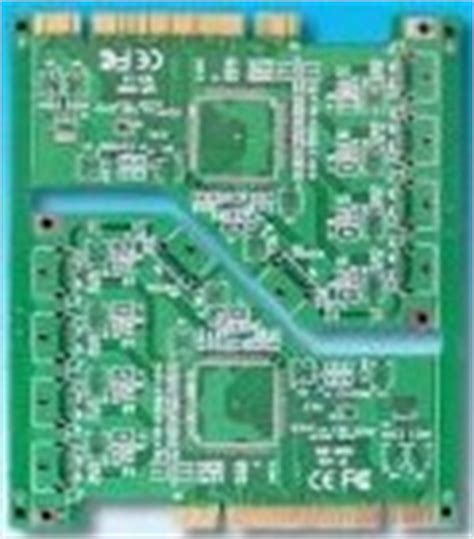Introduction to Digital Image Correlation (DIC) in PCB Manufacturing
Digital Image Correlation (DIC) is a powerful optical technique that has been gaining traction in various industries, including Lead-Free PCB manufacturing. DIC allows for non-contact, full-field strain and displacement measurements, providing valuable insights into the mechanical behavior of materials and structures. In the context of lead-free PCB manufacturing, DIC can be used to optimize the design, improve reliability, and ensure the long-term performance of printed circuit boards.
What is Digital Image Correlation?
Digital Image Correlation is a method that uses high-resolution digital cameras to capture images of a surface before and after deformation. By comparing these images using advanced computer algorithms, DIC can accurately measure the displacement and strain fields across the entire surface. This technique provides a wealth of information about the material’s response to loading, including strain distribution, crack propagation, and deformation patterns.
Advantages of DIC in PCB Manufacturing
- Non-contact measurement: DIC does not require physical contact with the specimen, eliminating the need for strain gauges or other invasive sensors.
- Full-field analysis: DIC provides strain and displacement data across the entire surface, allowing for a comprehensive understanding of the material’s behavior.
- High accuracy: With advanced algorithms and high-resolution cameras, DIC can achieve strain measurements with an accuracy of up to 0.01%.
- Versatility: DIC can be applied to a wide range of materials, including PCBs, components, and assemblies.
- Real-time monitoring: DIC can be used for real-time monitoring of deformation and strain, enabling in-situ analysis and early detection of potential failures.
How DIC Enhances Lead-free PCB Manufacturing
1. Optimizing PCB Design
One of the primary benefits of using DIC in lead-free PCB manufacturing is its ability to optimize PCB design. By analyzing the strain distribution and deformation patterns of a PCB under various loading conditions, engineers can identify areas of high stress concentration and potential failure points. This information can be used to modify the PCB layout, component placement, and trace routing to minimize stress and improve reliability.
Case Study: Strain Analysis of a Flexible PCB
A research team conducted a study to analyze the strain distribution in a flexible PCB using DIC. The PCB was subjected to bending loads, and the resulting strain fields were measured using a stereoscopic DIC system. The results showed that the strain was highest near the solder joints and component edges, indicating potential failure points. Based on these findings, the PCB design was modified to redistribute the strain and enhance the board’s flexibility.
2. Material Selection and Characterization
DIC can also be used to characterize the mechanical properties of lead-free PCB materials, such as laminates, substrates, and solder alloys. By measuring the strain response of these materials under various loading conditions, engineers can determine their elastic modulus, yield strength, and fatigue life. This information is crucial for selecting the most suitable materials for a given application and ensuring the long-term reliability of the PCB.
Experiment: Characterizing Lead-free Solder Alloys
A group of researchers used DIC to characterize the mechanical properties of two lead-free solder alloys: Sn-3.0Ag-0.5Cu (SAC305) and Sn-0.7Cu (SnCu). The solder joints were subjected to tensile testing, and the strain fields were measured using DIC. The results showed that SAC305 exhibited higher yield strength and better fatigue resistance compared to SnCu. These findings can guide material selection for lead-free PCB manufacturing.
| Solder Alloy | Yield Strength (MPa) | Fatigue Life (Cycles) |
|---|---|---|
| SAC305 | 45.2 | 1500 |
| SnCu | 32.8 | 800 |
3. Solder Joint Reliability Assessment
Solder joint reliability is a critical factor in lead-free PCB manufacturing, as solder joints are often the weakest links in the assembly. DIC can be used to assess the reliability of solder joints by measuring the strain distribution and crack propagation under thermal cycling and mechanical loading. This information can help identify potential failure modes and optimize the solder joint design for improved reliability.
Experiment: Thermal Cycling of Lead-free Solder Joints
An experimental study was conducted to investigate the reliability of lead-free solder joints under thermal cycling using DIC. The PCB assembly was subjected to thermal cycles between -40°C and 125°C, and the strain fields in the solder joints were measured at various intervals. The results revealed that the strain accumulated over time, leading to crack initiation and propagation. The DIC data was used to develop a failure prediction model for lead-free solder joints.
4. Quality Control and Failure Analysis
DIC can be integrated into the quality control process of lead-free PCB manufacturing to identify defects and anomalies in the assembly. By comparing the strain distribution of a manufactured PCB with a reference model, deviations can be detected and corrected before the board is shipped to the customer. Additionally, DIC can be used for failure analysis, helping engineers identify the root cause of a failure and implement corrective actions.
Case Study: Identifying PCB Warpage Using DIC
A PCB manufacturer used DIC to identify the cause of excessive warpage in their lead-free PCBs. The strain distribution across the PCB surface was measured using DIC during the reflow process. The results showed that the warpage was caused by uneven thermal expansion of the PCB layers. Based on these findings, the manufacturer adjusted the reflow profile and modified the PCB stackup to minimize warpage.
5. Design Validation and Testing
DIC plays a crucial role in validating the design of lead-free PCBs and ensuring their performance under real-world conditions. By subjecting the PCB assembly to various mechanical, thermal, and environmental loads, and measuring the strain response using DIC, engineers can verify that the board meets the design requirements and industry standards. This approach helps reduce the risk of field failures and improves the overall reliability of the final product.
Experiment: Drop Testing of a Lead-free PCB Assembly
A research team conducted drop tests on a lead-free PCB assembly to evaluate its mechanical reliability. The PCB was instrumented with a high-speed DIC system to capture the strain fields during the impact. The results showed that the strain was highest near the corners of the PCB and the solder joints of heavy components. These findings were used to optimize the PCB layout and component placement for enhanced drop resistance.
Frequently Asked Questions (FAQ)
-
What are the advantages of using DIC in lead-free PCB manufacturing?
DIC offers several advantages in lead-free PCB manufacturing, including non-contact measurement, full-field analysis, high accuracy, versatility, and real-time monitoring. These features enable engineers to optimize PCB design, select suitable materials, assess solder joint reliability, perform quality control, and validate the design under real-world conditions. -
How does DIC help in optimizing PCB design?
DIC helps in optimizing PCB design by providing strain distribution and deformation data under various loading conditions. This information allows engineers to identify areas of high stress concentration and potential failure points, enabling them to modify the PCB layout, component placement, and trace routing for improved reliability. -
Can DIC be used to characterize lead-free solder alloys?
Yes, DIC can be used to characterize the mechanical properties of lead-free solder alloys, such as yield strength, elastic modulus, and fatigue life. By measuring the strain response of solder joints under tensile or shear loading, engineers can select the most suitable alloy for a given application and ensure long-term reliability. -
How does DIC contribute to quality control in lead-free PCB manufacturing?
DIC can be integrated into the quality control process by comparing the strain distribution of a manufactured PCB with a reference model. Any deviations or anomalies can be detected and corrected before the board is shipped to the customer. This approach helps maintain consistent quality and reduces the risk of field failures. -
What role does DIC play in design validation and testing of lead-free PCBs?
DIC plays a crucial role in validating the design of lead-free PCBs by measuring the strain response under various mechanical, thermal, and environmental loads. By ensuring that the PCB meets the design requirements and industry standards, engineers can reduce the risk of field failures and improve the overall reliability of the final product.

Conclusion
Digital Image Correlation (DIC) is a powerful technique that offers numerous benefits in lead-free PCB manufacturing. From optimizing PCB design and selecting suitable materials to assessing solder joint reliability and performing quality control, DIC provides valuable insights into the mechanical behavior of PCBs. By leveraging the full-field, non-contact, and high-accuracy strain measurements provided by DIC, engineers can enhance the performance, reliability, and longevity of lead-free PCBs.
As the demand for lead-free electronics continues to grow, the adoption of DIC in PCB manufacturing is expected to increase. With its ability to provide real-time monitoring and in-situ analysis, DIC will play a crucial role in driving innovation and improving the quality of lead-free PCBs. As research and development in this field advance, we can expect to see more sophisticated DIC techniques and algorithms, further expanding the possibilities for optimizing PCB design and manufacturing processes.






Leave a Reply